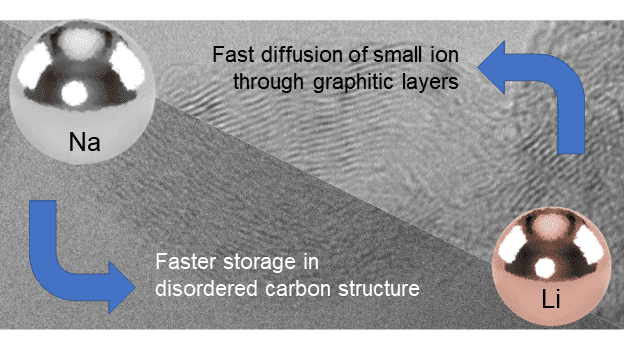
- Research
Published:
Carbon blacks (CBs) belong to the group of graphitizable carbon materials (also referred to as soft carbons), which are well-known as negative electrodes from the early-state of lithium-ion battery development and commercialization. Nowadays, they are mostly utilized as conductive additives in numerous applications related to electrochemical energy storage, rather than as active electrode materials. However, to consider those materials as conductive additive only, that does not contribute to the energy storage mechanism at all, does not live up to the opportunities these carbons offer if used as model materials to explain ion storage processes on a mechanistic level. This work sheds light on fundamental processes in hybrid ion capacitors and demonstrates how even minor structural differences in a series of CB materials alter the electrochemical behavior. Therefore, the diffusivity in different hybrid ion capacitor systems as well as varying alkali ion storage behaviors are investigated by the galvanostatic intermittent titration technique. The results reveal that the diffusion coefficients are two orders of magnitude lower in the low voltage plateau compared to the sloping region, showing that post-treated CBs are suffering from diffusional limitations in sodium-ion capacitors, due to smaller graphene interlayer distances, while in lithium-ion capacitors the diffusion is less hindered, as confirmed by rate capability tests and, therefore, another factor like electric conductivity seems to be limiting.
Schenk, J.; Leistenschneider, D.; Hoeppener, S.; Schubert, U. S.; Schutjajew, K.; Oschatz, M. Influence of structural modifications on the alkali ion storage properties of carbon black . Sustainable Energy & Fuels 2023, accepted.